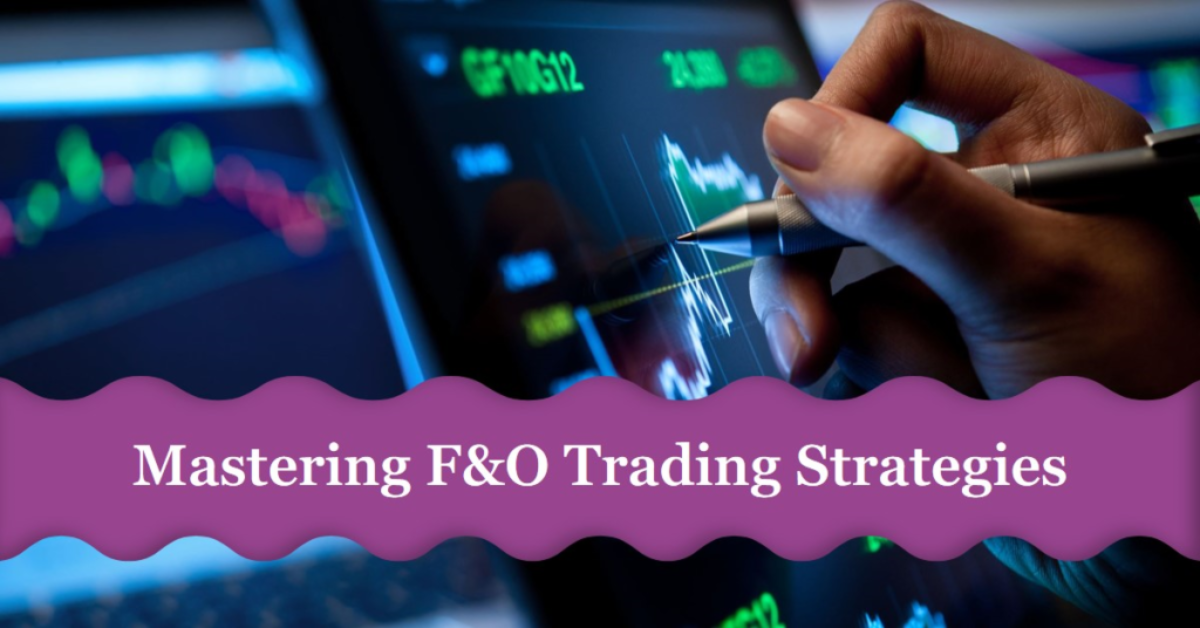Effective Trading Strategies for F&O Market Success
What are the best strategies to excel in the Futures and Options (F&O) market? How can traders optimize their F&O trading to achieve consistent success? This article covers key strategies for trading the F&O market.
Developing a Comprehensive Trading Plan
A trading plan is essential.
A trading plan is vital for structured and disciplined future and option trading. It sets specific goals, risk rules, and trade execution criteria. A strong plan helps traders stay focused. It avoids impulsive decisions that can lead to losses.
Components of an Effective Trading Plan
An effective trading plan should include several key elements. For example, set clear, achievable goals. These include desired returns and acceptable risks. Define the trading strategies to use, such as trend-following or mean reversion.
You must also set rules for position sizing, stop-loss orders, and max loss limits. Assess the plan’s effectiveness and refine it to match shifting markets. These are vital for successful trading.
Utilising Technical Analysis
Technical analysis involves analysing historical price data and chart patterns. As such, it will forecast future price movements. It uses tools and indicators to find trends. It seeks entry and exit points.
Key Technical Tools
- Trendlines and channels: they show the market’s direction and reversal points.
- Support and Resistance Levels: These levels may stop price falls or rises. They often guide trading decisions.
- Indicators: Common indicators include Moving Averages, Relative Strength Index (RSI), and Bollinger Bands. These tools provide insights into market momentum and potential overbought or oversold conditions.
Incorporating Fundamental Analysis
Fundamental analysis focuses on evaluating the underlying factors that affect asset prices. This approach involves examining economic indicators, financial statements, and market news. As such, it will gauge the intrinsic value of an asset.
Key Aspects of Fundamental Analysis
Economic indicators are a major aspect. They track key economic reports such as GDP growth, unemployment rates, and inflation. These indicators influence market conditions and asset prices.
For stock options, analyze financials, earnings reports, and business models. Assess their impact on stock performance. Also, stay updated on news that can affect asset prices. This includes geopolitical events and changes in monetary policy.
Risk Management Techniques
Effective risk management is essential to protect capital. This will ensure long-term trading success. It involves using strategies to reduce losses and manage market risks.
Risk Management Strategies
You should determine the size of each trade based on risk tolerance and account size. Avoid over-leveraging to protect against significant losses. Also, stop-loss orders can exit a trade if it moves against the expected direction. This limits potential losses.
Spread investments across different assets or strategies. This will help you reduce risk. Diversification helps mitigate the impact of adverse movements in any single position.
Continuous Learning and Adaptation
The F&O market undergoes rapid transformations. Continuous learning and adaptation are crucial for staying competitive. It will help you make informed trading decisions.
Ways to Stay Informed
- Market Research: Regularly review market trends, news, and economic reports. Use reliable sources and stay updated on changes affecting the F&O market.
- Education: Engage in ongoing education through trading courses, webinars, and books. Learn about new strategies, tools, and market developments.
- Networking: Connect with traders to share ideas and market insights.
Succeeding in the future and option trading requires a comprehensive approach. This way, traders can enhance their chances of success in future option trading. To succeed in the F&O market, stay informed and adapt to changes.
FAQs
- What is a trading plan, and why is it important for F&O trading? A trading plan outlines specific goals, risk rules, and trade
execution criteria, helping traders stay focused and avoid impulsive decisions that can lead to losses. - How can technical analysis help in F&O trading? Technical analysis involves analyzing historical price data and chart patterns to
forecast future price movements, helping traders find trends, entry, and exit points. - What are some key risk management strategies for F&O trading? Key strategies include determining trade sizes based on risk
tolerance, using stop-loss orders to limit potential losses, and diversifying investments to mitigate risk
